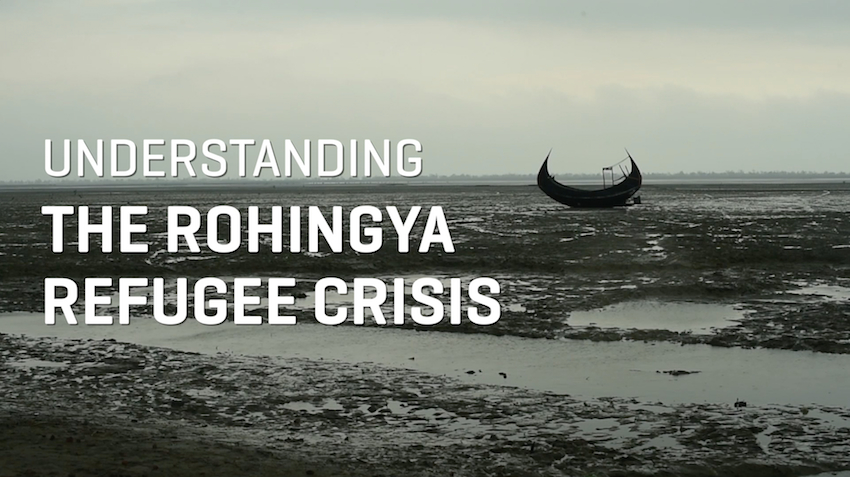The Cox’s Bazar district on Bangladesh's southeast coast has hosted Rohingya refugees fleeing targeted violence in neighbouring Myanmar's Rakhine state since 1978. The latest campaign of violence, which began on 25 August 2017, provoked an unprecedented exodus.
This most recent influx of refugees has come on top of 75,000 Rohingya who arrived after another spike in violence against them in October 2016. Most of the refugees live in makeshift settlements, UNHCR-registered camps or among the host community.
Around 900,000 Rohingya refugees live over a surface of just 26 square kilometres in Cox’s Bazar. Those in the settlements have little access to shelter, food, clean water or latrines.
MSF started working in Bangladesh in 1985 and have had a continuous presence in the country since 1992. Before August 2017, we had just one project in Cox’s Bazar, Kutupalong hospital; we now run multiple hospitals, primary health centres, and health posts in and around camps on the peninsula.

Understanding the Rohingya refugee crisis
We are treating patients for a wide range of conditions, including respiratory tract infections and diarrhoea diseases, linked to poor hygiene and sanitation conditions. The densely populated camps are breeding grounds for disease outbreaks. This is made worse by the area’s hilly terrain, which is prone to flooding and landslides.
Since December 2020 some refugees have been relocated to Bhasan Char, a silt island emerged in the Bay of Bengal less than 20 years ago, around 30 km from the mainland. The place had remained uninhabited until now, due in part to its remote location and unstable environment.
The authorities claim the island has an estimated capacity of housing 100,000 people. By October 2021, around 20,000 refugees had been relocated despite concerns about living conditions and access to basic services on the island.
Infectious diseases
Most of the refugees arrived in Bangladesh with low vaccination coverage. In 2017, increasing numbers of people with suspected measles prompted the government to step up its immunisation efforts in the camps and makeshift shelters. MSF has supported a number of vaccination campaigns run by the government of Bangladesh to prevent the spread of diphtheria, measles and cholera. Despite several rounds of vaccinations, gaps remain.
The emergency response to the issues of shelter, water and sanitation needs to be urgently scaled up. As Rohingya’s living conditions are still poor, the risk of infectious diseases remains.
Follow-up for non-communicable diseases (NCDs) and surgical capacity are additional areas of concern, as facilities within the camps are limited and we fear they may be reduced over time. MSF is offering healthcare to NCD patients and in the first nine months of 2021 more than 43,000 consultations have been undertaken.
COVID-19
The first case of COVID-19 among the Rohingya was confirmed in May 2021. Rumours and misinformation about the new coronavirus, as well as movement restrictions, have recurrently kept people in need of essential non COVID-19 healthcare away from clinics.
Movement restrictions imposed during 2020 and 2021 by authorities had an impact on the activities of humanitarian actors and on the living conditions in the camps.
In the crowded camps, water is in short supply, while protective measures such as physical distancing and frequent handwashing are nearly impossible.
In August 2021 a first round of COVID-19 vaccination was offered for refugees over 55 years old. Our facilities were made available as vaccination points and teams in some projects helped in the vaccination campaign.
Mental health
The mental health needs of the Rohingya have evolved over the years. Unemployment, anxiety about the future, poor living conditions, and little or no access to basic services, such as formal education, have added to the traumatic memories of the violence suffered in Myanmar. For an increasing number of refugees, the burden of years living in worsening conditions has become heavier than the trauma they lived in Myanmar.
Some patients are receiving psychiatric treatment for severe mental health issues, including bipolar disorder and schizophrenia. Our teams have seen an increasing number of people with mental health issues in our facilities across Cox’s Bazar.
Yet despite the obvious needs, only a small proportion of the Rohingya living in Bangladesh can access specialised mental health care services.
As settlements continue to expand, access to them needs to be improved and more support provided to scale up the full range of healthcare required.

Kamrangirchar
We also work in Kamrangirchar, one of the biggest slum areas in the Bangladeshi capital, Dhaka. Our staff provide vital healthcare and mental health services to women living in this densely populated community.
Most patients who seek counselling have been abused by a family member they are still living or in close contact with. While there are often few options for women to change their living situations, our counselling team carries out vital work in helping them develop resilience and hope. We also provide reproductive healthcare for adolescent girls and family planning services.
Kamrangirchar is close to hundreds of small factories, where people often work in very dangerous conditions. We run an occupational health programme for factory workers. In 2019, a mobile clinic started specifically for tannery workers, but it was interrupted by the COVID-19 pandemic.
Natural disasters
Bangladesh is prone to cyclones and floods. Over the years, our work in the country has involved several emergency responses.



